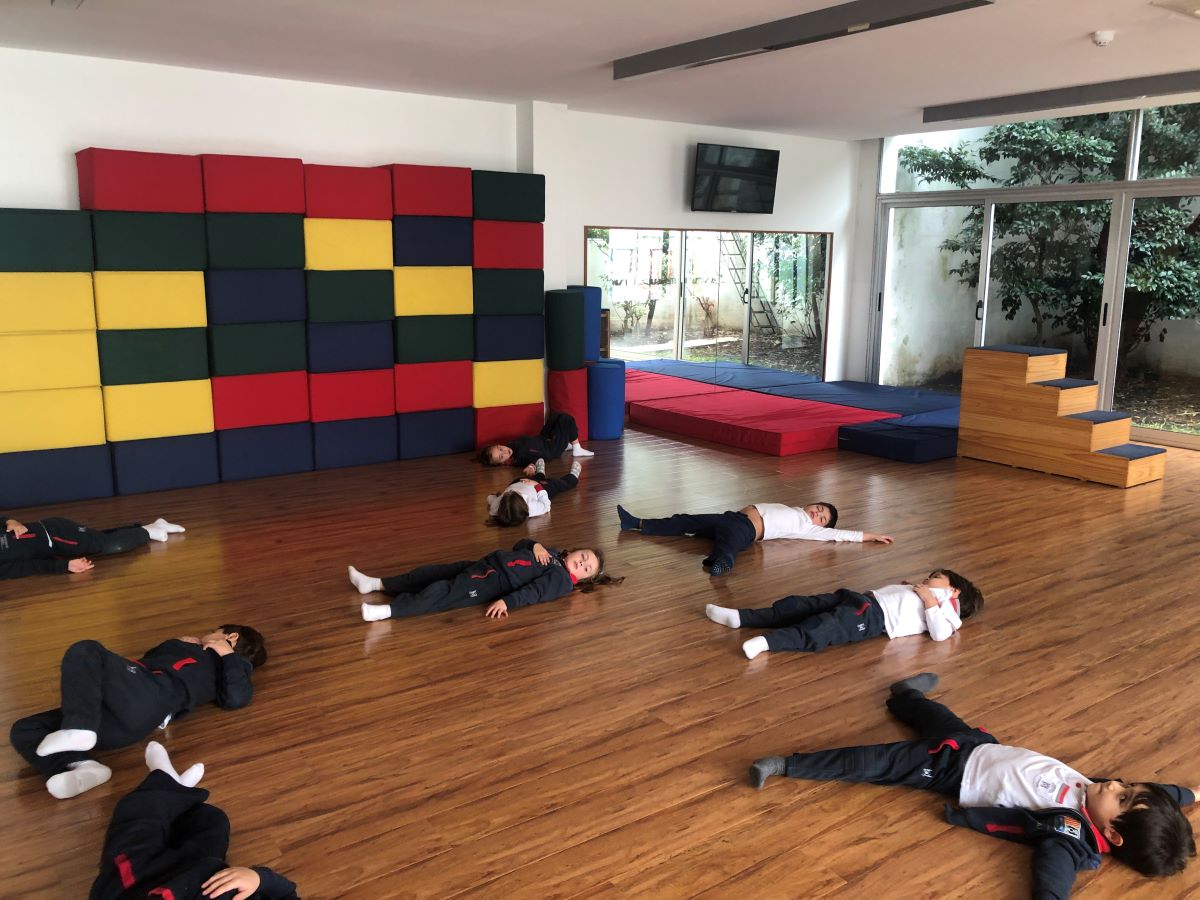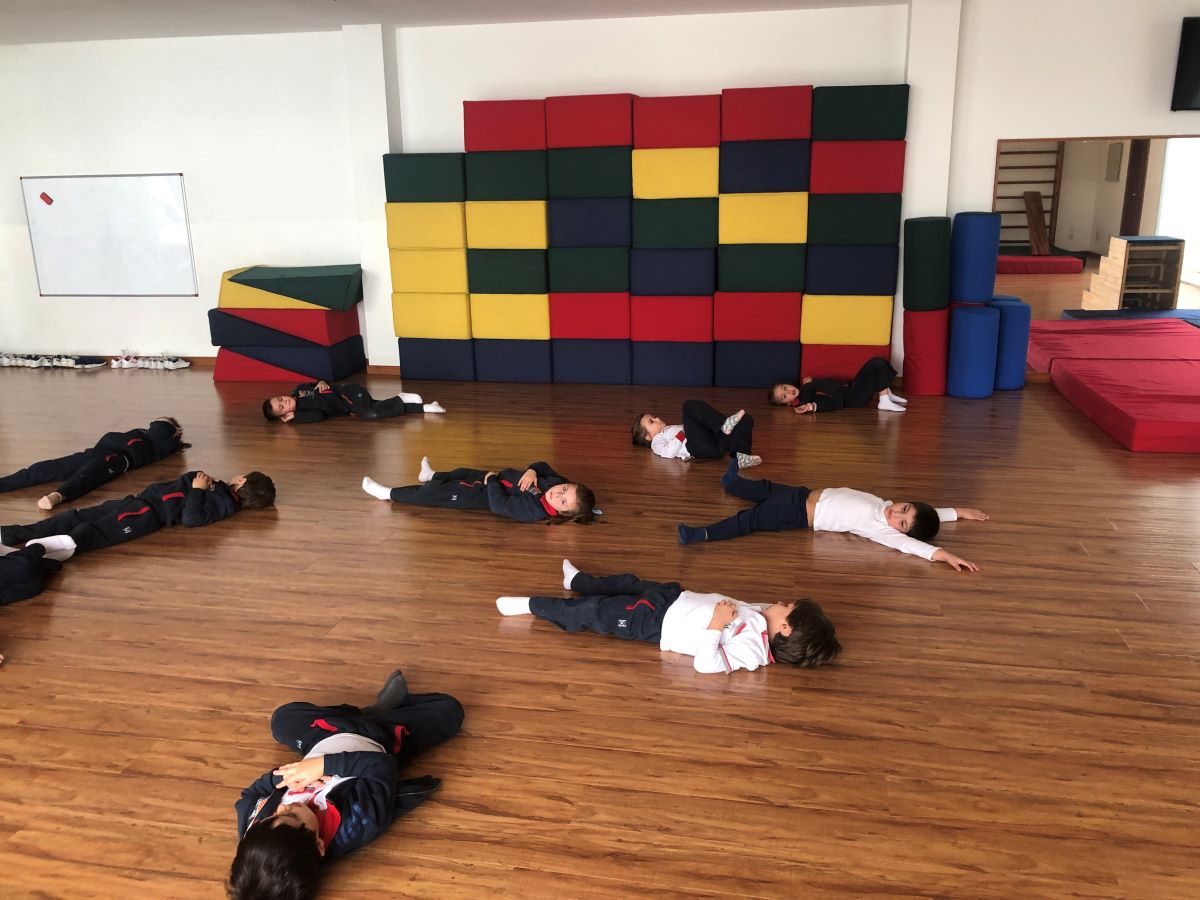
"(…) generate a space-time in which the individual
meet your body and open yourself to listening to what happens in it,
open yourself to feel the emotions and responses of the body.”
In the current times we live in, both adults and children are overloaded with activities and stimuli. Overstimulation inhibits or prevents us from developing creativity, creating our own rhythms, and makes it difficult to resolve the challenges we face on a daily basis in a timely manner.
In order to educate subjects who can discern as St. Ignatius teaches us, we must teach them to pause, feel and think before acting. “By stopping, you give yourself the opportunity to react differently to the circumstances in which you find yourself.” (Snel, E. 2013).
In the Initial, in the Psychomotor workshops, after playing and tidying up, we often use different adapted relaxation techniques.
Relaxation is a resource that helps the transition from action to thought. Being able to take a few minutes to put aside movement, breathe and feel the body in stillness, helps children to access representation. It promotes the ability to replace movement with projects and images and in this way represent what has already been experienced.
Calmels (2000) explains that relaxation's technical application and use has spanned various fields and disciplines and therefore has various meanings, among which are the following:
- regulatory sense: the objective is to produce tranquility, calm, return to calm.
- economic sense: the aim is to recover as much energy as possible in the shortest possible time.
- transcendental sense: nullifying body sensations to connect with meditation.
- anesthetic sense: to diminish or eliminate painful sensations.
- pleasurable sense: connecting with pleasant sensations.
- Awareness sense: bringing attention to the body in a segmental or global way, with the aim of obtaining awareness and mastery.
- pedagogical sense: knowledge of the different parts of the body and the different connections of the parts with each other.
Although many of these senses possibly occur, from Psychomotricity it is said that "the central objective is to generate a space-time in which the individual meets his body and opens up to listening to what happens in it, opens up to feeling the emotions and responses of the body (...)" (Camacho, M. and Paolillo, G. 2004).
We invite you to spend a few minutes at home stopping the movement and taking a break, a physical record of how we get to the end of the day, how we feel and focus your attention on your breathing, “by observing the movement of your breathing, you become more aware of your inner world. You become more aware of the now, and that is the beginning of concentration.” (Snel, E. 2013).
There are various techniques that those interested in the subject can explore; today we simply suggest that you find a warm and comfortable place, you can sit or lie on your back, you can do it with your children or guide them.
You can enrich the atmosphere with accompanying music or simply name the body parts out loud to keep a record of them as they are named (without having to move them).
Attention can be focused through breathing or by recounting a calming image, such as a walk in the countryside or on the beach.
 Another option is to use a ball, for example, as a medium to apply small amounts of pressure to the body so that it helps to take note of the different parts of the body and promote relaxation.
Another option is to use a ball, for example, as a medium to apply small amounts of pressure to the body so that it helps to take note of the different parts of the body and promote relaxation.
Practicing these techniques is not automatic and, as Snel (2013) explains, by being present in their breathing, children can easily become distracted, images, plans for the next day or simply the desire to move can come to mind. It is important that adults have patience and accompany them, knowing that each child has their own rhythms.
Teaching children from a young age to take a break during the day, record how they feel and find their body in calm is a learning process that they will gradually be able to implement in different everyday situations and that will allow them to self-regulate.
In addition to teaching, we also recommend that you look for and enjoy your minutes of pause, “focusing attention on breathing always helps, children, parents, grandparents (…)” (Snel E. 2013).
Psychologist Mikaela Barbieri